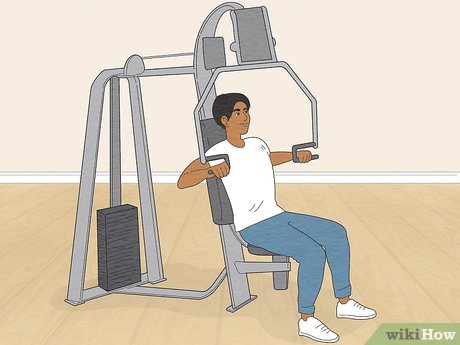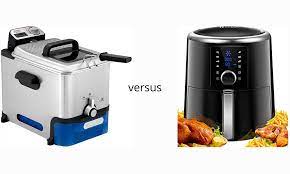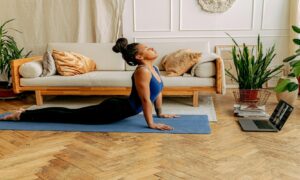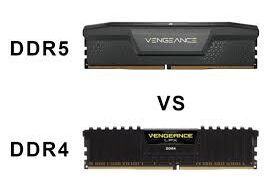Introduction
Working out at home is more popular than ever, but not everyone knows how to make the most of the equipment they have. Whether it’s a jump rope, set of dumbbells, or resistance bands, many tools we buy often end up sitting unused. The truth is, you don’t need a fancy setup to get results—you just need to know how to use what you’ve got. This article covers how to use different types of gym equipment at home for effective workouts.
Setting Up a Home Gym on a Budget and in Small Spaces
Creating a home gym can help you stay consistent with your workouts while saving time and money. Even if your living space or budget is limited, you can still set up a functional area that supports a wide range of exercises. The key is to plan your space and equipment choices carefully based on what you have available.
Start by choosing a dedicated workout spot in your home. You don’t need an entire room. A small corner in your bedroom, a section of your living room, or part of your garage can work. Having a consistent area helps you stay focused and makes it easier to set up and store your gear.
When space is tight, go for equipment that doesn’t take up much room but still offers a lot of workout options. Some of the most practical items include:
- Resistance bands, which are light, portable, and allow for full-body workouts
- Adjustable dumbbells, which save space compared to a full rack of weights
- Foldable training benches or workout mats that can be stored away when not in use
These options let you perform multiple types of exercises without cluttering your space.
If you’re working with a tight budget, look into more affordable ways to get started. You can:
- Buy secondhand equipment through local marketplaces or online classifieds
- Try DIY solutions, like using filled water bottles as weights or creating a step platform from sturdy household items
- Look for beginner kits that include several items bundled together at a lower price
To keep your setup tidy and functional, think vertically. Use wall hooks, hanging shelves, or over-the-door racks to store bands, mats, and jump ropes. This helps you maximize storage without using valuable floor space.
With smart planning and the right equipment, you can build a home gym that fits your space and your budget while still supporting a complete and effective workout routine.
Must-Have Equipment for Effective Full-Body Home Workouts
Creating a full-body workout routine at home is possible, but the right equipment makes a big difference. Having a few key tools allows you to train all major muscle groups, progress over time, and stay consistent—without needing much space.
One of the most efficient pieces of equipment you can own is a set of adjustable dumbbells. These let you perform a wide range of strength exercises, from bicep curls to lunges, while taking up very little room. You can increase or decrease the weight as needed, which helps you build strength gradually.
Another important tool is a training bench, which adds versatility to your workouts. A sturdy, adjustable bench allows you to perform exercises like chest presses, step-ups, and seated shoulder presses with proper support. Look for a foldable or compact design if space is limited.
To improve your core strength and coordination, consider using a stability ball. It challenges your balance during exercises like planks, crunches, and bridges. This helps activate smaller muscles that support your spine and posture.
For any floor-based workouts, such as stretching, yoga, or bodyweight training, a yoga mat improves comfort and safety. It gives you a non-slip surface and protects your joints from hard floors during exercises like sit-ups and push-ups.
To target your upper body, especially your back and arms, installing a pull-up bar is a smart move. You can mount it in a doorway and use it for pull-ups, chin-ups, or even hanging leg raises. It takes up almost no floor space and trains muscles that are often missed in bodyweight-only routines.
For more dynamic, full-body movements, a kettlebell can be very effective. You can use it for exercises like swings, goblet squats, and presses. These movements train multiple muscle groups at once and increase your heart rate, making them useful for both strength and cardio.
Here’s a quick list of essential home gym equipment for full-body training:
- Adjustable dumbbells – strength training with space-saving design
- Resistance bands – versatile, portable, and suitable for all levels
- Stability ball – engages core muscles and improves balance
- Yoga mat – provides comfort and support on hard surfaces
- Pull-up bar – builds upper body and back strength with minimal space
- Kettlebell – enables powerful full-body movements and workouts
With just these basic tools, you can build an effective home workout routine that targets your entire body. Each one supports a different type of movement or muscle group, giving you variety and flexibility in your training.
Using Strength and Resistance Equipment for Beginner-Friendly Exercises
Strength and resistance training play a key role in your home workout routine. They help build muscle, support joint health, and raise your metabolism—even if you’re a beginner. Starting with the right equipment and exercises can make it easier to stay consistent and avoid injury.
Two of the most beginner-friendly tools for home strength workouts are resistance bands and dumbbells. They offer a mix of affordability, versatility, and space efficiency, which is ideal if you’re working out in a small area. Resistance bands come in different tension levels, and dumbbells are available in fixed or adjustable sets. Adjustable dumbbells are especially useful because they let you increase the weight as you get stronger, without needing multiple sets of weights. Resistance bands work the same way—you can switch to a thicker band or double them up to add more challenge.
When you’re just starting out, focus on basic compound movements. These exercises use multiple muscle groups and help you build a solid foundation. Good starting options include:
- Squats with dumbbells or bands
- Lunges using bodyweight or light resistance
- Bent-over rows with resistance bands or dumbbells
- Glute bridges with a resistance band around your thighs
To avoid injury and get the most from your workouts, keep your form steady and controlled. Start with a light resistance level and make sure you’re moving slowly through each part of the exercise. Rushing through reps or using too much resistance can lead to poor technique and strain.
You don’t need to train every day. A simple full-body routine two to three times per week is enough to start seeing progress. For example, you could do one circuit of the exercises above, then repeat it once or twice depending on your energy and fitness level. Over time, as your strength improves, you can add more reps, more sets, or increase the resistance.
By choosing accessible tools and sticking to a consistent schedule, you can build strength safely and effectively at home.
Cardio Equipment and Routines for At-Home Heart Health
Cardiovascular exercise helps keep your heart strong, supports healthy blood circulation, and plays a key role in managing weight and energy levels. You can get these benefits without needing to leave your home or buy large, expensive machines. With the right tools and routines, you can build a consistent cardio habit right at home, even in small spaces.
A few pieces of compact equipment can be especially helpful if you’re starting out or working with limited room. These tools are easy to store and use:
- Jump ropes: Great for quick, high-intensity cardio. They’re lightweight, inexpensive, and can be used in even a small open area.
- Mini steppers: These mimic stair climbing and provide constant movement for your legs without taking up much space.
- Under-desk bikes: You can pedal while sitting, making them useful for multitasking during work or watching TV.
- Foldable treadmills: These allow for walking or jogging and can be folded away when not in use.
You don’t need any equipment to get your heart pumping, though. Simple routines using just your body can be effective too. You can create a home cardio workout with movements like:
- Brisk walking or jogging in place for timed intervals.
- Jump rope sessions with short bursts and rest breaks.
- Dance workouts to music, which combine fun and movement.
- Step-ups using stairs or a sturdy box.
- High knees or marching in place to raise your heart rate.
If you’re new to cardio, start with short sessions—around 10 to 15 minutes—and build up gradually. Always warm up with light movement and cool down with gentle stretching. With a little consistency, you can turn your home into a reliable space for supporting your cardiovascular health.
Flexibility and Mobility Tools for Stretching and Recovery at Home
When you train at home, improving your flexibility and supporting recovery are just as important as building strength or endurance. Flexibility and mobility help you move better, improve your form during exercises, and support your joints. They also play a role in reducing the risk of injury and easing muscle soreness after workouts. Including tools that help with stretching and recovery can make your home fitness routine more complete and sustainable.
Several simple tools can help you build flexibility and support your recovery. You don’t need much space, and most of these items are easy to store:
- Foam rollers: Useful for self-massage and releasing muscle tension.
- Resistance bands: Help with stretching and can improve joint range of motion.
- Yoga blocks and straps: Assist with stretch support and proper alignment.
- Massage balls: Target tight spots in your back, glutes, or feet.
Foam rollers help release tight muscles and support myofascial release, which is the loosening of the connective tissue around your muscles. Rolling out your legs or back after a session can reduce soreness and improve circulation. To use one, gently roll the targeted muscle group over the foam roller for 30 to 60 seconds, pausing where you feel tension.
Resistance bands are another helpful tool. You can use them for dynamic stretches that involve movement, which can improve both flexibility and joint mobility. For example, anchoring a resistance band on a door and using it to stretch your shoulders or hamstrings can give you a deeper and more controlled range of motion than static stretching alone.
Yoga blocks and straps make many stretches more accessible, especially if you’re not very flexible still. They support your body so you can hold positions without straining. A block under your hand during a side bend or a strap around your foot during a hamstring stretch can help you maintain good form and feel more stable.
Massage balls are great for pinpointing areas that are hard to reach with a roller. You can place one under your glutes, shoulder blades, or feet and apply gentle pressure by leaning into it. This helps work out knots and tension in specific areas.
After your main workout, a short stretching or mobility session can help your muscles recover and keep your joints healthy. Even 10 minutes can make a difference. Adding this recovery time supports long-term mobility and can help you feel better between workouts.
Core and Balance Training with Simple Home Gym Equipment
Building core strength and improving balance are key parts of any fitness routine. These areas support your posture, help with daily movements, and lower your risk of injury. When your core muscles are strong and your balance is steady, your entire body works more efficiently. You don’t need a lot of space or expensive equipment to train these areas at home.
You can use simple tools to train your core and balance effectively at home. Some of the most useful and affordable pieces of equipment include:
- Stability balls: These help activate your core muscles during exercises like planks or crunches by adding an element of instability.
- Balance discs: These small, inflatable discs challenge your coordination and strengthen smaller stabilizing muscles when you perform movements like standing leg lifts or squats.
- Resistance bands: These are great for adding tension during core exercises like seated rotations or banded leg raises, helping you build strength while staying stable.
With these tools, you can do exercises that target multiple muscle groups while also improving coordination. For example, doing a forearm plank on a stability ball forces your core to stay engaged to keep the ball from rolling. Standing on a balance disc while lifting one leg at a time makes your core work to keep you upright. These movements are simple to learn and can be adjusted to your fitness level.
Bodyweight Workouts and Minimal Equipment Training Options
If you’re setting up a home workout routine, starting with bodyweight exercises and minimal equipment is both practical and effective. You don’t need a lot of space or a big budget to begin improving your strength, endurance, and overall fitness. These options are also flexible, allowing you to train in your living room, bedroom, or even outside.
Bodyweight exercises build strength using your own body as resistance. They are simple to learn and require no equipment, which makes them ideal if you’re just starting out. Some foundational movements to include in your routine are:
- Push-ups: Target your chest, shoulders, and arms.
- Squats: Strengthen your legs and glutes.
- Lunges: Improve balance and lower body strength.
- Planks: Engage your core and improve stability.
To add variety and increase the challenge of these exercises, you can gradually adjust how you perform them. For example, do more repetitions, slow down your movement to increase time under tension, or try harder variations like wide-grip push-ups or jumping squats.
You can also make your workouts more engaging and effective by including minimal equipment that doesn’t take up much space. A few good options are:
- Resistance bands: Useful for adding resistance to squats, rows, or bicep curls.
- Jump rope: Great for improving cardio and coordination.
- A sturdy chair or step: Helps with dips, step-ups, or incline push-ups.
To get a more complete workout, combine different bodyweight movements into a circuit. This means doing several exercises back to back with short rest periods. For example, you could do 10 squats, 10 push-ups, 10 lunges (each leg), and a 30-second plank, then repeat the cycle a few times. Circuits train your full body and keep your heart rate up, which supports both strength and cardiovascular fitness.
Starting with bodyweight training and a few small tools gives you a solid foundation for consistent home workouts, even if space and equipment are limited.
Conclusion
Using a variety of gym equipment at home makes workouts more effective and sustainable. It’s both practical and adaptable, offering room for progress without needing a commercial gym. A well-equipped home space supports your goals, but consistency remains the most important tool.



































